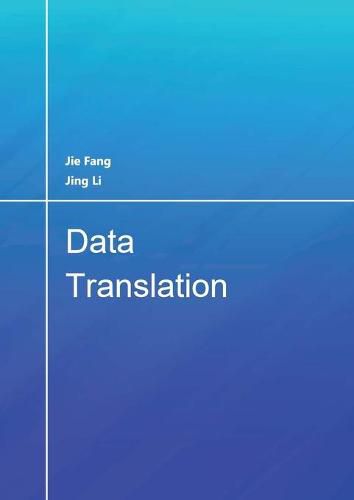Readings Newsletter
Become a Readings Member to make your shopping experience even easier.
Sign in or sign up for free!
You’re not far away from qualifying for FREE standard shipping within Australia
You’ve qualified for FREE standard shipping within Australia
The cart is loading…






This title is printed to order. This book may have been self-published. If so, we cannot guarantee the quality of the content. In the main most books will have gone through the editing process however some may not. We therefore suggest that you be aware of this before ordering this book. If in doubt check either the author or publisher’s details as we are unable to accept any returns unless they are faulty. Please contact us if you have any questions.
Modern software always has a multiple-level hierarchical architecture and complex structure, and it also involves a variety of third-party modules and tools. Data translating and interfacing therefore play an import role among different modules and tools. A model base data translation is described in the book for the purpose of correctness, complete and consistency on both syntax and semantic levels.
An information model is conventionally built in order to capture the requirements and structure of information at a conceptual level. This book explores ways of exploiting information models. In this particular case, the intent is to investigate how information models may be mapped in order to automate the process of generating data translators.
The work focuses on an examination of issues relating to the development of data translators, which generate output in the 2D graphical domain. The book describes the development of two data translators, which provide appropriate case studies. An information model describing the target of the translation was created and formal mappings were developed between two other information models and the target model. The mappings were then evaluated through the manual development of two translators to implement the mappings.
$9.00 standard shipping within Australia
FREE standard shipping within Australia for orders over $100.00
Express & International shipping calculated at checkout
Stock availability can be subject to change without notice. We recommend calling the shop or contacting our online team to check availability of low stock items. Please see our Shopping Online page for more details.
This title is printed to order. This book may have been self-published. If so, we cannot guarantee the quality of the content. In the main most books will have gone through the editing process however some may not. We therefore suggest that you be aware of this before ordering this book. If in doubt check either the author or publisher’s details as we are unable to accept any returns unless they are faulty. Please contact us if you have any questions.
Modern software always has a multiple-level hierarchical architecture and complex structure, and it also involves a variety of third-party modules and tools. Data translating and interfacing therefore play an import role among different modules and tools. A model base data translation is described in the book for the purpose of correctness, complete and consistency on both syntax and semantic levels.
An information model is conventionally built in order to capture the requirements and structure of information at a conceptual level. This book explores ways of exploiting information models. In this particular case, the intent is to investigate how information models may be mapped in order to automate the process of generating data translators.
The work focuses on an examination of issues relating to the development of data translators, which generate output in the 2D graphical domain. The book describes the development of two data translators, which provide appropriate case studies. An information model describing the target of the translation was created and formal mappings were developed between two other information models and the target model. The mappings were then evaluated through the manual development of two translators to implement the mappings.